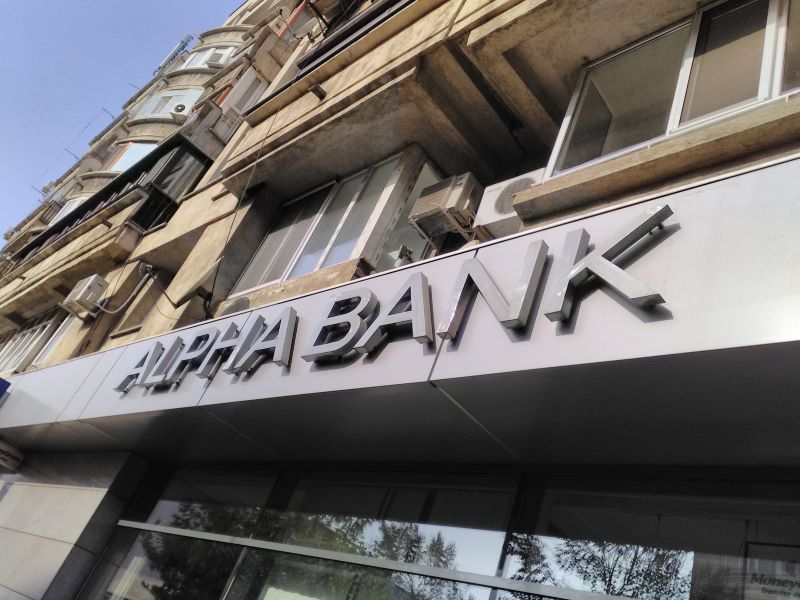UniCredit Group´s CEE Analysis: CEE banking – the way out of the crisis
– Lending stagnation due to lack of demand rn- Banking sector remaining resilient through the crisis rn- Countries should focus on full deployment of EU funds, to extract the maximum in terms of growth stimulusrn- UniCredit well positioned and on the frontline to re-startrnrnIn the aftermath of the global crisis the economic environment in Central and Eastern Europe (CEE) is now slowly showing signs of recovery. However the growth outlook varies significantly, with some countries recovering faster and some others being more vulnerable to the ongoing market turbulences, but all clearly remaining below their long term potential. “The crisis had an impact on the banking system as well, though it remained resilient and profitable in CEE, continuing to show significant growth prospects”, so Federico Ghizzoni, Head of CEE Banking Operations, UniCredit Group. rnrnAlthough banking in CEE still holds opportunities, a number of market conditions differ after the crisis. “We expect the potential in terms of banking penetration to stay, with the loans and deposit growth becoming more balanced”, so Debora Revoltella, Head of CEE Strategic Analysis of UniCredit Group, referring to the Group’s latest forecast on the banking sector. In the context of a lower economic growth, the volumes growth will remain below the pre-crisis levels, but nevertheless still stay much above the more mature markets.rnrnThe driver of the current recovery is the corporate business, emerging first from the crisis and being the engine of future growth. In the context of high unemployment and low consumption the retail sector will only slowly develop its potential. However, the economic convergence process between CEE and Western Europe is still ongoing, though at a lower pace and with a more rebalanced economic model. “The banking sector remains one of the drivers of economic convergence. At the current stage, however, we need to see recovery from the demand side before we really see an acceleration in lending”, so Revoltella. “The positive news is that we are now close to the peak in terms of credit quality problems. We already see some stabilisation in non-performing- loans and we believe the trend will clearly revert starting later this year”. rnrnThe future development in the CEE region however shows a quite diversified scenario. The market attractiveness / risk mix clearly remains in favour of Russia, Turkey and Romania. Other Central and Southern European countries show good attractiveness and a low risk profile. The strongest impact of the crisis affected the Ukraine, Kazakhstan and the Baltic countries, with a clear need for a rebalancing of the growth model. rnrnLack of demand for lending behind the current credit crunchrnDuring the crisis, first liquidity crunch and then concerns for credit quality have been behind lending weakness. At the beginning of this year the situation clearly changed. As expected, today stagnating loan volumes are a matter of lack of demand, in the context of over-liquidity. “Banks are liquid, which is proved by the fact that placements with the central banks are far above the minimum requirements”, so Ghizzoni. rnrnThe key question for the around 2,450 banks operating in the CEE banking sector, with their total assets of more than EUR 2,100 billion, is how to re-start the engine. “Demand rather than supply of credit should be the key driver out of the crisis”, says Revoltella. Thus, in a future scenario of strict fiscal control, the countries should find a way of stimulating demand. Options to achieve this could be by fully deploying EU funds, by putting competitiveness and quality of the operating environment on the top of the priorities. “EU Funds, if fully utilized, have the potential to add from 1 to 2 pp of nominal GDP growth to the region in 2010, which is a remarkable figure in the current context”, explains Revoltella. rnrnWith respect to banks’ commitment, Federico Ghizzoni underscores UniCredit’s favorable position: “We have entered 2010 highly capitalized, with € 2 bn additional capital in Bank Austria available for growth in the region. We have over-liquid banks, ready to re-start lending and we have an excellent network and a good country positioning to leverage on, other than streamlined internal processes to grant speed of decision and fully exploitation of Group best practices. Thus, the CEE region remains one of our key pillars where we are in the position to fully exploit future growth opportunities.” The ranking of the top banks in CEE is led by UniCredit Group, operating through Bank Austria in CEE1, with total assets of EUR 116 billion and a net profit before tax of EUR 1,600 million in the region in 2009. With CEE weighting for 13% of the Group’s total assets, UniCredit is also a well diversified player in the region. rnrnThis text can be found on the homepage www.bankaustria.at.
Comentarii
Nu există comentarii pentru această știre.
Adauga un comentariu
Alte stiri din categoria: ENGLISH
Neutral interest rate in Romania
The neutral nominal rate in Romania has been falling since the start of inflation targeting in 2005. The Taylor Rule clearly shows that interest rates peaked in 2022 and have been on a clear downward path ever since.Furthermore, the model estimates a long-term neutral nominal rate of around 3.9%, which is the equivalent of approx. 1.4% real.Using a more sophisticated model (i.e. New York FED’S HLW model), the real neutral interest rate in Romania is estimated currently at around 1.5% (1.7% 2023 average) and the historical mean at 1.2%.This implies a neutral nominal rate between 4.00% and 4.50%. In the past decade, the NBR real effective rate was below the neutral rate and only over the past year climbed above the neutral mark.Source: Erste Bank
Merger of Alpha Bank and UniCredit Bank Romania
Press Release:"Alpha Services and Holdings announces a strategic partnership with UniCredit in RomaniaMerger of Alpha Bank Romania and UniCredit Bank Romania and creation of third largest bank in Romania by... detalii
National Bank of Romania (NBR) Board decisions on monetary policy
NBR Board decisions on monetary policyIn its meeting of 4 April 2023, the Board of the National Bank of Romania decided:• to keep the monetary policy rate at 7.00 percent per annum;• to leave unchanged the lending (Lombard) facility rate at 8.00 percent per annum and the deposit facility rate at 6.00 percent per annum;• to keep the existing levels of minimum reserve requirement ratios on both leu- and foreign currency-denominated liabilities of credit institutions.The annual inflation rate went down to 15.52 percent in February 2023, from 16.37 percent in December 2022, relatively in line with forecasts. The decrease was mainly driven by the sizeable drop in the dynamics of fuel and electricity prices, under the impact of significant base effects and the change made to the energy price capping and compensation scheme starting 1... detalii
ING posts 2022 net result of €3,674 million, dividend of €0.389 per share
ING press release:ING posts FY2022 net result of €3,674 million,proposed final 2022 dividend of €0.389 per share 4Q2022 profit before tax of €1,711 million; CET1 ratio remains strong at 14.5%•Profit before tax up 29% on 4Q2021 and 24% on 3Q2022, mainly driven by higher income•Higher net interest income, as a further increase in liability margins helped offset TLTRO impact this quarter•Risk costs declined to 17 bps of average customer lending Full-year 2022 net result of €3,674 million, supported by growing customer base and increase in lending and deposits•On a full-year basis, our primary customer base grew by 585,000•Net core lending growth of €18 billion and net core deposits growth of €25 billion in 2022•Net result of €3,674 million in a challenging year; proposed final 2022 dividend of €0.389 per share CEO statement“Looking back, 2022 was... detalii
 BT Financial Results as at 30 September 2022
BT Financial Results as at 30 September 2022
 No progress for the time being in Revolut becoming a subsidiary bank
No progress for the time being in Revolut becoming a subsidiary bank
 Risks may arise with some cross-border electronic invoice and card services
Risks may arise with some cross-border electronic invoice and card services
 ING posts 2Q 2022 net result of €1,178 million, supported by increased income and modest risk costs
ING posts 2Q 2022 net result of €1,178 million, supported by increased income and modest risk costs
 Sale of Raiffeisenbank (Bulgaria) EAD to KBC Bank closed
Sale of Raiffeisenbank (Bulgaria) EAD to KBC Bank closed
 Willi Cernko appointed new CEO of Erste Group
Willi Cernko appointed new CEO of Erste Group
 Erste Group CEO Bernd Spalt decides not to renew contract
Erste Group CEO Bernd Spalt decides not to renew contract
 First Bank launches the new cards collection
First Bank launches the new cards collection
 NBR Board decisions on monetary policy
NBR Board decisions on monetary policy
 Reflections on 20 years of the euro: joint article by Eurogroup members
Vezi toate stirile
Reflections on 20 years of the euro: joint article by Eurogroup members
Vezi toate stirile
Criza COVID-19
- In majoritatea unitatilor BRD se poate intra fara certificat verde
- La BCR se poate intra fara certificat verde
- Firmele, obligate sa dea zile libere parintilor care stau cu copiii in timpul pandemiei de coronavirus
- CEC Bank: accesul in banca se face fara certificat verde
- Cum se amana ratele la creditele Garanti BBVA
Topuri Banci
- Topul bancilor dupa active si cota de piata in perioada 2022-2015
- Topul bancilor cu cele mai mici dobanzi la creditele de nevoi personale
- Topul bancilor la active in 2019
- Topul celor mai mari banci din Romania dupa valoarea activelor in 2018
- Topul bancilor dupa active in 2017
Asociatia Romana a Bancilor (ARB)
- Băncile din România nu au majorat comisioanele aferente operațiunilor în numerar
- Concurs de educatie financiara pentru elevi, cu premii in bani
- Creditele acordate de banci au crescut cu 14% in 2022
- Romanii stiu educatie financiara de nota 7
- Gradul de incluziune financiara in Romania a ajuns la aproape 70%
ROBOR
- ROBOR: ce este, cum se calculeaza, ce il influenteaza, explicat de Asociatia Pietelor Financiare
- ROBOR a scazut la 1,59%, dupa ce BNR a redus dobanda la 1,25%
- Dobanzile variabile la creditele noi in lei nu scad, pentru ca IRCC ramane aproape neschimbat, la 2,4%, desi ROBOR s-a micsorat cu un punct, la 2,2%
- IRCC, indicele de dobanda pentru creditele in lei ale persoanelor fizice, a scazut la 1,75%, dar nu va avea efecte imediate pe piata creditarii
- Istoricul ROBOR la 3 luni, in perioada 01.08.1995 - 31.12.2019
Taxa bancara
- Normele metodologice pentru aplicarea taxei bancare, publicate de Ministerul Finantelor
- Noul ROBOR se va aplica automat la creditele noi si prin refinantare la cele in derulare
- Taxa bancara ar putea fi redusa de la 1,2% la 0,4% la bancile mari si 0,2% la cele mici, insa bancherii avertizeaza ca indiferent de nivelul acesteia, intermedierea financiara va scadea iar dobanzile vor creste
- Raiffeisen anunta ca activitatea bancii a incetinit substantial din cauza taxei bancare; strategia va fi reevaluata, nu vor mai fi acordate credite cu dobanzi mici
- Tariceanu anunta un acord de principiu privind taxa bancara: ROBOR-ul ar putea fi inlocuit cu marja de dobanda a bancilor
Statistici BNR
- Deficitul contului curent, în creștere cu 82% pe T1 2025
- Deficitul contului curent, creștere cu 16% în ianuarie 2025
- Deficitul contului curent, aproape 30 miliarde euro în 2024
- Deficitul contului curent, aproape 20 miliarde euro după primele nouă luni
- Deficitul contului curent, aproape 18 miliarde euro după primele opt luni
Legislatie
- Decizia nr.105/2007 privind raportarea la Biroul de Credit
- Legea nr. 311/2015 privind schemele de garantare a depozitelor şi Fondul de garantare a depozitelor bancare
- Rambursarea anticipata a unui credit, conform OUG 50/2010
- OUG nr.21 din 1992 privind protectia consumatorului, actualizata
- Legea nr. 190 din 1999 privind creditul ipotecar pentru investiții imobiliare
Lege plafonare dobanzi credite
- Care este dobanda maxima la un credit IFN?
- BNR propune Parlamentului plafonarea dobanzilor la creditele bancilor intre 1,5 si 4 ori peste DAE medie, in functie de tipul creditului; in cazul IFN-urilor, plafonarea dobanzilor nu se justifica
- Legile privind plafonarea dobanzilor la credite si a datoriilor preluate de firmele de recuperare se discuta in Parlament (actualizat)
- Legea privind plafonarea dobanzilor la credite nu a fost inclusa pe ordinea de zi a comisiilor din Camera Deputatilor
- Senatorul Zamfir, despre plafonarea dobanzilor la credite: numai bou-i consecvent!
Anunturi banci
- BCR este inchisa vineri, 18 aprilie, si luni, 21 aprilie
- Cererile de transfer de bani prin Whatsapp, Telegram, Messenger sunt fraude
- Un telefon sau mesaj care pare de la banca poate fi frauda
- Cererea unui ajutor in bani poate fi o inselaciune
- Cate reclamatii primeste Intesa Sanpaolo Bank si cum le gestioneaza
Analize economice
- Comerțul, în creștere cu 3,8% pe prima treime a anului
- Prețurile industriale, o nouă scădere în aprilie 2025
- Prognoza de primăvară - creșterea PIB, ajustată în jos până în 2027
- Datoria publică, majorată la 56,3% din PIB în februarie 2025
- Inflația anuală - scădere marginală, la 4,85%
Ministerul Finantelor
- -2,95% din PIB, deficit bugetar după prima treime a anului
- Deficitul bugetar, rezultat slab pe T1 2025
- Deficitul bugetar, din ce în ce mai mare la început de an
- -8,65% din PIB, deficit bugetar pe anul 2024
- Datoria publică, 51,4% din PIB la mijlocul anului
Biroul de Credit
- FUNDAMENTAREA LEGALITATII PRELUCRARII DATELOR PERSONALE IN SISTEMUL BIROULUI DE CREDIT
- BCR: prelucrarea datelor personale la Biroul de Credit
- Care banci si IFN-uri raporteaza clientii la Biroul de Credit
- Ce trebuie sa stim despre Biroul de Credit
- Care este procedura BCR de raportare a clientilor la Biroul de Credit
Procese
- ANPC pierde un proces cu Intesa si ARB privind modul de calcul al ratelor la credite
- Un client Credius obtine in justitie anularea creditului, din cauza dobanzii prea mari
- Hotararea judecatoriei prin care Aedificium, fosta Raiffeisen Banca pentru Locuinte, si statul sunt obligati sa achite unui client prima de stat
- Decizia Curtii de Apel Bucuresti in procesul dintre Raiffeisen Banca pentru Locuinte si Curtea de Conturi
- Vodafone, obligata de judecatori sa despagubeasca un abonat caruia a refuzat sa-i repare un telefon stricat sau sa-i dea banii inapoi (decizia instantei)
Stiri economice
- Inflația anuală în creștere la 5,45%, prin efect de bază
- Comerțul exterior, -11,6 miliarde euro după prima treime a anului
- România, cea mai redusă pondere din UE a persoanelor care lucrează la pensie
- România, tot prima din UE la inflația anuală în aprilie 2025
- Producția industrială, în scădere pe primele trei luni ale anului
Statistici
- România, cel mai rapid proces de motorizare din UE
- Comerțul, în creștere cu 4% pe T1 2025
- România, marginal peste Estonia la inflația anuală
- România, a doua țară din UE ca pondere a salariaților cu venituri mici
- România, pe locul trei în UE la creșterea costului muncii în T2 2024
FNGCIMM
- Programul IMM Invest continua si in 2021
- Garantiile de stat pentru credite acordate de FNGCIMM au crescut cu 185% in 2020
- Programul IMM invest se prelungeste pana in 30 iunie 2021
- Firmele pot obtine credite bancare garantate si subventionate de stat, pe baza facturilor (factoring), prin programul IMM Factor
- Programul IMM Leasing va fi operational in perioada urmatoare, anunta FNGCIMM
Calculator de credite
- ROBOR la 3 luni a scazut cu aproape un punct, dupa masurile luate de BNR; cu cat se reduce rata la credite?
- In ce mall din sectorul 4 pot face o simulare pentru o refinantare?
Noutati BCE
- Dobanda la euro scade la 2,25%
- Acord intre BCE si BNR pentru supravegherea bancilor
- Banca Centrala Europeana (BCE) explica de ce a majorat dobanda la 2%
- BCE creste dobanda la 2%, dupa ce inflatia a ajuns la 10%
- Dobânda pe termen lung a continuat să scadă in septembrie 2022. Ecartul față de Polonia și Cehia, redus semnificativ
Noutati EBA
- Bancile romanesti detin cele mai multe titluri de stat din Europa
- Guidelines on legislative and non-legislative moratoria on loan repayments applied in the light of the COVID-19 crisis
- The EBA reactivates its Guidelines on legislative and non-legislative moratoria
- EBA publishes 2018 EU-wide stress test results
- EBA launches 2018 EU-wide transparency exercise
Noutati FGDB
- Banii din banci sunt garantati, anunta FGDB
- Depozitele bancare garantate de FGDB au crescut cu 13 miliarde lei
- Depozitele bancare garantate de FGDB reprezinta doua treimi din totalul depozitelor din bancile romanesti
- Peste 80% din depozitele bancare sunt garantate
- Depozitele bancare nu intra in campania electorala
CSALB
- Cum se fac fraudele bancare online și cum ne ferim de ele
- Vrei o rată mai mică la credit? Schimbă dobânda variabilă cu una fixă
- Sistemul bancar romanesc este deosebit de bine pregatit pentru orice fel de socuri
- La CSALB poti castiga un litigiu cu banca pe care l-ai pierde in instanta
- Negocierile dintre banci si clienti la CSALB, in crestere cu 30%
First Bank
- Ce trebuie sa faca cei care au asigurare la credit emisa de Euroins
- First Bank este reprezentanta Eurobank in Romania: ce se intampla cu creditele Bancpost?
- Clientii First Bank pot face plati prin Google Pay
- First Bank anunta rezultatele financiare din prima jumatate a anului 2021
- First Bank are o noua aplicatie de mobile banking
Noutati FMI
- FMI: criza COVID-19 se transforma in criza economica si financiara in 2020, suntem pregatiti cu 1 trilion (o mie de miliarde) de dolari, pentru a ajuta tarile in dificultate; prioritatea sunt ajutoarele financiare pentru familiile si firmele vulnerabile
- FMI cere BNR sa intareasca politica monetara iar Guvernului sa modifice legea pensiilor
- FMI: majorarea salariilor din sectorul public si legea pensiilor ar trebui reevaluate
- IMF statement of the 2018 Article IV Mission to Romania
- Jaewoo Lee, new IMF mission chief for Romania and Bulgaria
Noutati BERD
- Creditele neperformante (npl) - statistici BERD
- BERD este ingrijorata de investigatia autoritatilor din Republica Moldova la Victoria Bank, subsidiara Bancii Transilvania
- BERD dezvaluie cat a platit pe actiunile Piraeus Bank
- ING Bank si BERD finanteaza parcul logistic CTPark Bucharest
- EBRD hails Moldova banking breakthrough
Noutati Federal Reserve
- Federal Reserve anunta noi masuri extinse pentru combaterea crizei COVID-19, care produce pagube "imense" in Statele Unite si in lume
- Federal Reserve urca dobanda la 2,25%
- Federal Reserve decided to maintain the target range for the federal funds rate at 1-1/2 to 1-3/4 percent
- Federal Reserve majoreaza dobanda de referinta pentru dolar la 1,5% - 1,75%
- Federal Reserve issues FOMC statement
Noutati BEI
- BEI a redus cu 31% sprijinul acordat Romaniei in 2018
- Romania implements SME Initiative: EUR 580 m for Romanian businesses
- European Investment Bank (EIB) is lending EUR 20 million to Agricover Credit IFN
Mobile banking
- Comisioanele BRD pentru MyBRD Mobile, MyBRD Net, My BRD SMS
- Termeni si conditii contractuale ale serviciului You BRD
- Recomandari de securitate ale BRD pentru utilizatorii de internet/mobile banking
- CEC Bank - Ghid utilizare token sub forma de card bancar
- Cinci banci permit platile cu telefonul mobil prin Google Pay
Noutati Comisia Europeana
- Avertismentul Comitetului European pentru risc sistemic (CERS) privind vulnerabilitățile din sistemul financiar al Uniunii
- Cele mai mici preturi din Europa sunt in Romania
- State aid: Commission refers Romania to Court for failure to recover illegal aid worth up to €92 million
- Comisia Europeana publica raportul privind progresele inregistrate de Romania in cadrul mecanismului de cooperare si de verificare (MCV)
- Infringements: Commission refers Greece, Ireland and Romania to the Court of Justice for not implementing anti-money laundering rules
Noutati BVB
- BET AeRO, primul indice pentru piata AeRO, la BVB
- Laptaria cu Caimac s-a listat pe piata AeRO a BVB
- Banca Transilvania plateste un dividend brut pe actiune de 0,17 lei din profitul pe 2018
- Obligatiunile Bancii Transilvania se tranzactioneaza la Bursa de Valori Bucuresti
- Obligatiunile Good Pople SA (FRU21) au debutat pe piata AeRO
Institutul National de Statistica
- România, la 78% din PIB-ul mediu pe locuitor al UE
- Producția industrială, la cota -1,8% după 11 luni din 2024
- Deficitul contului curent, peste 26 miliarde euro în noiembrie 2024
- Comerțul cu amănuntul - în creștere cu 8% pe primele 10 luni
- Deficitul balanței comerciale la 9 luni, cu 15% mai mare față de aceeași perioadă a anului trecut
Informatii utile asigurari
- Data de la care FGA face plati pentru asigurarile RCA Euroins: 17 mai 2023
- Asigurarea împotriva dezastrelor, valabilă și in caz de faliment
- Asiguratii nu au nevoie de documente de confirmare a cutremurului
- Cum functioneaza o asigurare de viata Metropolitan pentru un credit la Banca Transilvania?
- Care sunt documente necesare pentru dosarul de dauna la Cardif?
ING Bank
- La ING se vor putea face plati instant din decembrie 2022
- Cum evitam tentativele de frauda online?
- Clientii ING Bank trebuie sa-si actualizeze aplicatia Home Bank pana in 20 martie
- Obligatiunile Rockcastle, cel mai mare proprietar de centre comerciale din Europa Centrala si de Est, intermediata de ING Bank
- ING Bank transforma departamentul de responsabilitate sociala intr-unul de sustenabilitate








